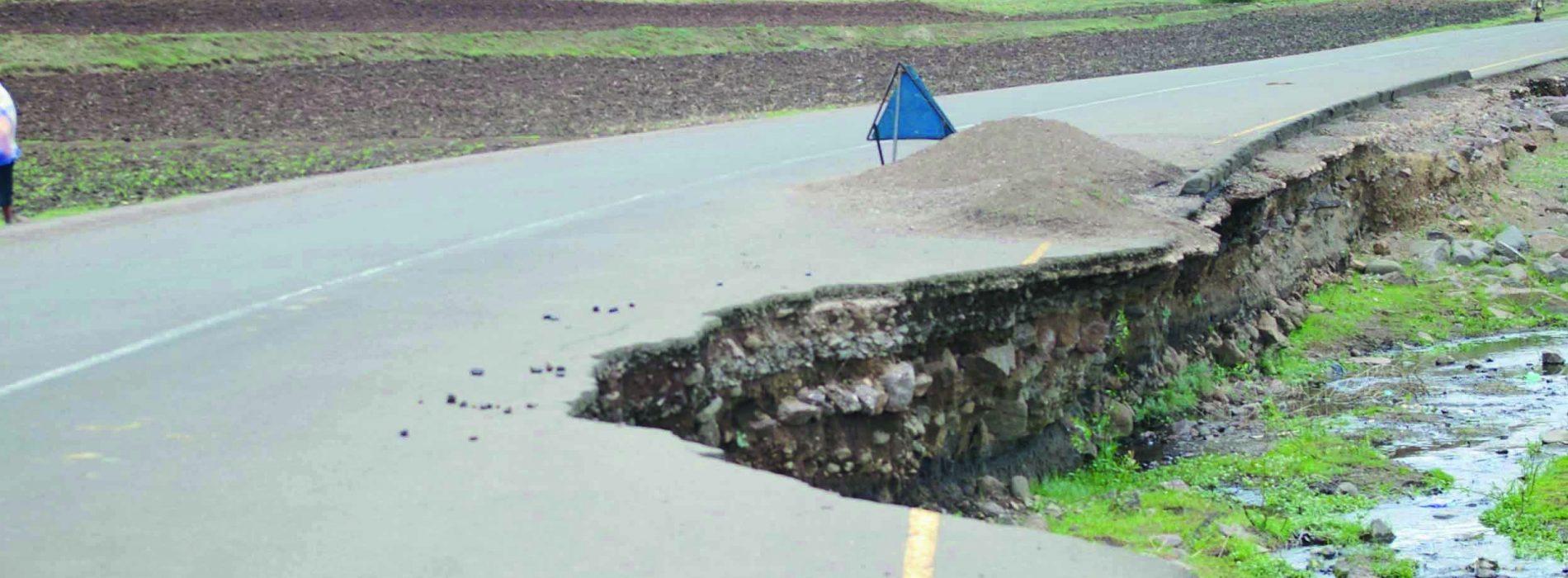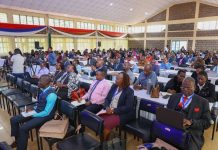Africa-Press – Lesotho. This time of the year ushers a mixed bag of news. Some good. Some bad. Some will be exciting and some very painful. However, one thing that is guaranteed is that this time of the year is often characterised by horrific road accidents. The question that we should be asking ourselves as “tax payers” is whether our country is really serious about road safety interventions.
Or whether our country is serious about anything for that matter?
Any visitor that arrives in a place for the first time, will measure the state of that economy by observing the condition of the roads or the condition of the police uniform or even the condition of the buildings more especially, the airport.
The condition of the national road network will always be the first and simplest measure of the health and state of any economy. In fact, there is a direct co-relation between the condition and quality of a road network to the state of governance or leadership.
Allow me to go deeper: national roads that are in a dilapidated condition are usually a reflection of a dysfunctional leadership. That is the reason why a country that loves itself (naha e ithatang) will spend hundreds of millions in US Dollars to construct state-of-the-art roads from the airport into the city-centre.
The reason for that is to make a first and lasting impression. That is why I still fail to understand the rationale behind providing a guarantee of about 2 Billion Maloti on sports facilities whilst the roads are in a shocking state.
Where is the rationale? Was that decision thoroughly debated or was it just a blind political decision?
Well, that’s a debate for another day but roads are very important for any economy to function effectively. Roads function like arteries to deliver blood in our body. Clocked or thin arteries can’t deliver blood effectively which leads to organ failure.
An example on the ground is the bottleneck at the Maseru Border post!
Please allow me to paint a scenario: When a visitor or investor arrives in Lesotho for the first time, their first impression will be a dilapidated airport.
As the visitor drives out of the airport premises they will enter into a village named Mazenod, where I come from. As the visitor drives through Mazenod, it will be encountered by filth made of plastic waste along the road.
There are no street-lights for safety of pedestrians at night. No road markings to mark where and how the double-lane system is supposed to work. No guard rails on curves and no traffic lights at the chaotic Masianokeng intersection to Roma.
The visitor will also witness Mazenod Primary School-kids walking on the edge of the road where the yellow line is supposed to be marked. If one visits any of the classrooms at Mazenod Primary School, there isn’t even a single poster on the wall on road safety education.
What happened to road safety education at our schools? What about on the radio or Lesotho Television?
Lastly, as the visitor drives further down in Mazenod, it will witness Swallows football players sitting on crates, indulging in alcohol and urinating in full view of children and elderly citizens.
This happens on the periphery of a national road. Well, not forgetting cows and dogs crisscrossing randomly at any given time. Look, this is the reality of what the modern day Lesotho is.
I am a regular viewer of Lesotho Television news despite the crazy volume blunders. I try to watch the news every night in order to catch-up on the state of affairs in our Kingdom.
In recent times, I realised a surprising spike in road safety workshops. These were workshops held on ways to improve road safety measures and strategic plans for the festive season.
It came to my surprise on my recent trip to the Maletsunyane Braai Festival, that there is simply nothing on the ground. There is no visible implementation of road safety measures that were discussed on TV.
So, what was the point of the workshops?
I am referring to simple measures like visible road markings on national roads. There are no warning signs when approaching speed humps and the humps are not marked.
The guard-rails are in a rundown state. I further saw a damaged guard-rail in Ha Thetsane, along the Kofi Annan road as you drive into the city. The guard-rails have an open space that seems to have been knocked down about three months ago.
Still, nothing has been done to repair it (refer to the picture attached). School children from Ratjomose Primary School have to walk past that danger spot, everyday.
Scenario number two: When arriving in Maseru at night from the Maseru Border post, a visitor is plunged into darkness because the streetlights along Kingsway Road hardly ever work.
There are children jaywalking in and out of the road around Ha Hoohlo. Visitors entering into the city will also see a road sign written “Kingsway Road” instead of “Road”, somewhere next to Hoohlo Primary School.
That is the state of our road signs. As the visitor drives along Kingsway Road from the Maseru border, towards the Basotho Hat, the road is characterized by damaged lamp-post.
Most of them have collapsed on the roadside with exposed electric-wires. Around the Basotho precinct, there is an abandoned structure that looks like an incomplete billboard structure. The structure has been left right in front of a national monument. That structure is actually a hazard to both motorists and pedestrians.
The question is: why would such a structure be left next to an important monument and an important arcade in our capital city?
Can anyone abandon a structure in along the Nelson Mandela Road in Bloemfontein or in front of the Union Buildings in Pretoria? They would be arrested the very same day.
So, why do our road officials allow such things in Lesotho?
When driving further down into Mpilo Boulevard (Blvd), the road is marred by horrific car crashes.
The intersection at Mpilo Blvd and Pope John Paul II road as well as Mpilo Blvd and the AME Hall are high accident zones. However, there is not even a single sign to warn motorists on the potential for danger ahead. We usually see signs with a big red dot written “high accident zone” in some parts of South African roads.
What is the problem with installing such signs in Lesotho? Is it a procurement issue?
When driving further into Mpilo towards IEMS one will come cross an intersection with traffic lights that hardly ever work, for one reason or another.
The traffic-light intersection does not have clear road markings. In fact most intersections don’t. This has now escalated into drivers taking matters into their own hands.
Drivers usually make a left hand turn into the Main South-One Road towards Iketsetseng Primary School, even when the lights are red. It has become some sort of a sub-culture to drive when the lights are red.
When schools are open, motorists drive past Iketsetseng Primary School children sitting on the edge of the road, after school. No fence, no warning signs, no speed humps, no traffic marshals.
Further inland along the Main South One road in Borokhoaneng, one will encounter chaos of the highest order. There are no visible road markings, no visible signs, pedestrian crossings are not visibly marked and the street-lights hardly ever work.
It becomes chaotic when driving on a rainy night. To make matters worse, there is a busy warehouse (cash & carry), where trucks make illegal U-turn’s and offload goods from the main road.
It is chaotic to say the least! Who in the world issued a permit for a warehouse to be built in the road reserve? Is there any law and order in Lesotho?
This is a summary of the many dangers on our roads but the biggest danger is unlicensed drivers and drivers that have bought drivers’ licences without even setting foot in a road test or exam.
These are usually 4+1 and Honda-Fit drivers. They have placed lives of pedestrian more especially children, under immense danger. This demonstrates how dangerous corruption is.
Government officials that sell drivers licenses don’t realise the danger they cause on our roads. They only care about their stomachs. Those are the dangers of a cancer named corruption.
At the same time, there are civil servants on the government payroll that are being paid with taxpayers’ money for doing absolutely nothing. I know for-sure that they will blame government for lack of funds and for problematic procurement procedures.
However, taxpayers, tourists and investors face danger on a daily basis but are still expected to pay tax under the current circumstances. The question that we must address is: Is Lesotho really serious about road safety? The answer is NO!






